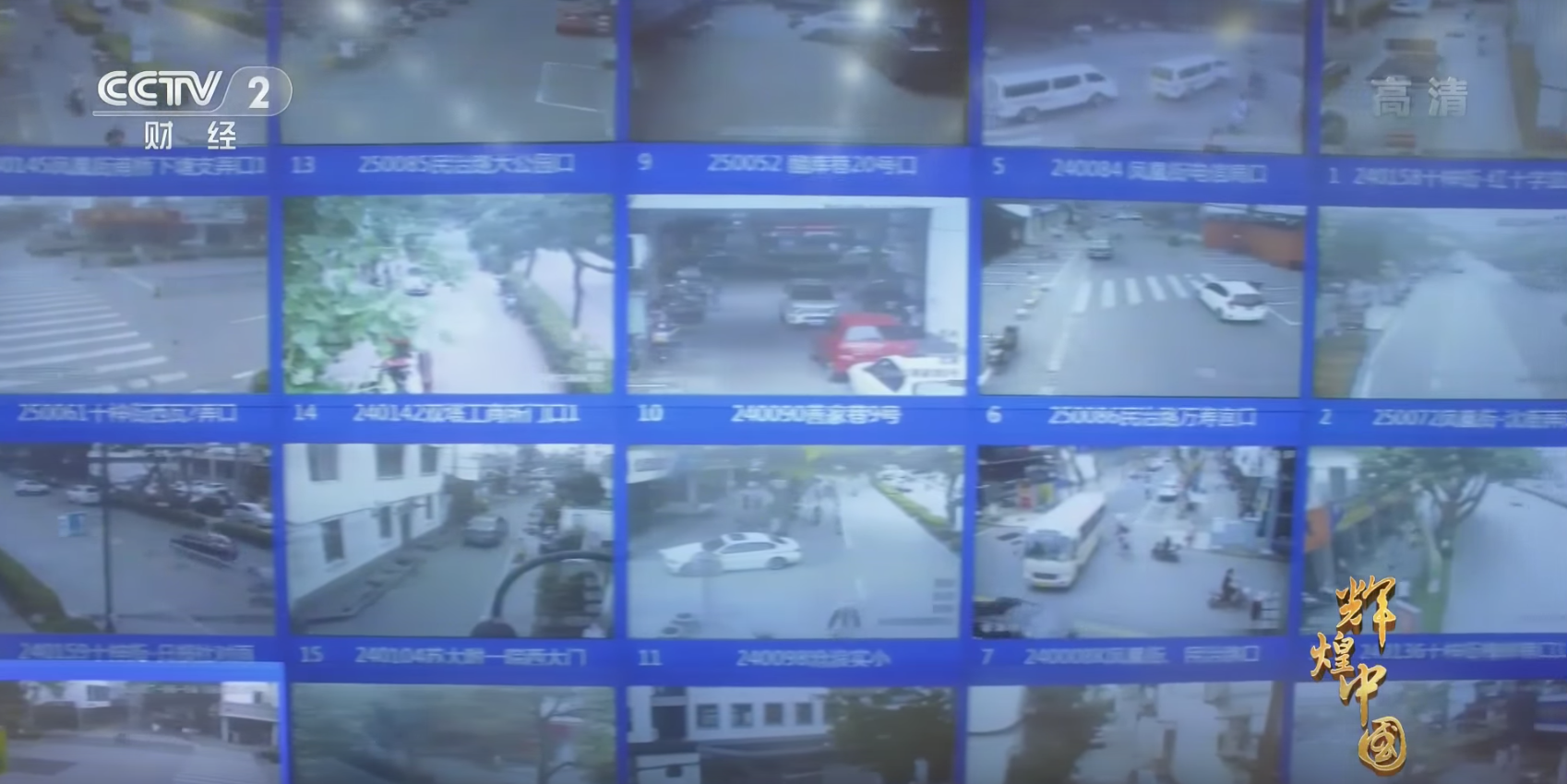Would you feel safe or intruded upon, if you live in a place where all corners are monitored by surveillance cameras?
Well, that's the ambivalent feeling Chinese citizens have to contend with, while they live in a country that boasts of having the world's largest surveillance network, linked up by more than 20 million closed-circuit television (CCTV) cameras.
Largest CCTV network in the world
A China Central Television (CCTV - pun not intended) produced propaganda documentary -- Amazing China (Episode 5) Well-off Together broadcasted on Sept. 24, contained a segment (watch from 9:00 onwards, in Chinese) that showcased how the city of Suzhou in Jiangsu Province has harnessed cutting-edge surveillance technology and advance information networks for law enforcement.
 CCTV monitoring at the Suzhou police data centre. Screenshot via CCTV's video
CCTV monitoring at the Suzhou police data centre. Screenshot via CCTV's video
One of the scenes in the documentary showed that the Suzhou police force has a data centre that is capable of monitoring all CCTVs in the city, which will help the police be more responsive to any criminal activities.
You can read what was proudly proclaimed in the programme below:
"China has successfully built the world's largest CCTV monitoring network, with more than 20 million surveillance cameras. This massive project is called "China Sky Net"(中国天网) and it's the pair of eyes that will protect the Chinese people...The use of artificial intelligence and big data to anticipate law and order issues is not only something that has been rolled out across the country, the methods are also of world-class standards."
[related_story]
How CCTV technology is used for criminal investigations
Based on the documentary, here's how a criminal case is handled using the CCTV technology in China:
- A citizen reports a case to the police.
- The police conducts a background check on the suspect. All details uncovered and the progress of the search will be reported in real-time to the local police data centre.
- The CCTV monitoring system is located at the local police data centre. Using the information given to them , the police at the centre conducts more further checks using artificial intelligence, big data, and the CCTVs. The technology also helps to detect potential crimes that may be committed by the suspect at large.
- Meanwhile, the police on the ground continue their investigations. Any new details related to the suspect will be reported via smartphones to the data centre.
- The suspect is identified eventually. The case is finally closed when the community police nabs him/her after receiving clearance.
- All information collected through the technology systems will be saved and used for risk analysis of related crimes in the future.
Public reactions negative
Chinese netizens have, however, largely reacted negatively to the news.

Translation: Can you capture human traffickers and find missing children and women? You may look like you are damn good, but when it comes to crucial moments, you can't find anything.

Translation: You can't even find a lost child. What's the point of this??

Translation: When it comes to being transparent about the high-level officials' assets, it's said that there are technical difficulties. But in other aspects, there's nothing technology cannot do to solve them.

Translation: The close monitoring of citizens is the common way of evil dictatorships!

Translation: Come to think of this, this is too frightening...and they will say it's all for your own good.

Translation: There's no privacy at all...the visual experience is akin to a zoo.
(All screenshots via Toutiao News)
“Sky Net” surveillance system
China began building its nationwide surveillance system “Sky Net” in 2005. It was upgraded several times, by 2015, Sky Net covered 100 percent of Beijing.
The system knows who is who because Chinese people are reportedly given a photo national ID by the age of 16, and the data is stored in the Chinese government’s database. That makes it easy to tag and track people.
Top image screenshot via CCTV's video
If you like what you read, follow us on Facebook, Instagram, Twitter and Telegram to get the latest updates.
